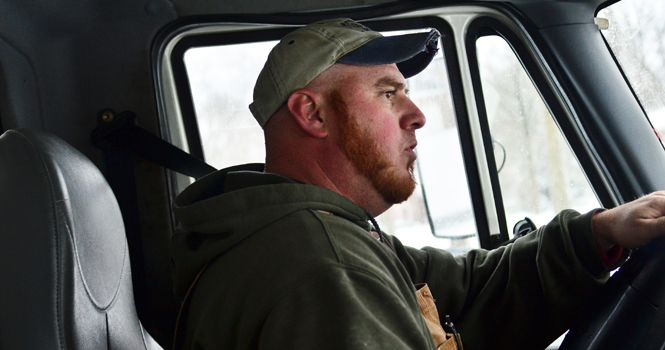Transportation officials stay on top of the weather
January 19, 2012
It’s hard to call it a mild winter right after a snowstorm, but that is exactly what Kent has experienced this year.
According to National Weather Service statistics, in December 2011, this area has received only about 2.4 inches of snow, nearly 8 inches less than the usual average for that month. In December 2010 alone, the area recorded more than 19 inches.
Mild or not, area officials, like the grounds department at Kent State and the Ohio Department of Transportation, are prepared for a storm at any time.
“Typically all our county managers are weather gurus,” said Brent Kovacs, the public information specialist with district four of ODOT. “They really pay attention to what’s forecasted and what’s coming.”
Kovacs said ODOT workers begin preparing roads anywhere between four to six hours before a storm hits. This usually involves a pre-treatment with brine, a saltwater mixture.
Heather White, the grounds manager at Kent State, said most of the grounds workers also watch the weather closely. Once a snowstorm is predicted they spend time checking over their equipment to make sure it is in working order.
After the area got several inches at the beginning of January, White said the grounds crew replenished the salt barrels placed around campus and ordered more shovels. Also, White said they used stakes to mark the location of newer sidewalks so they don’t get missed.
“There is a lot that goes on between [storms],” said White.
Before the snowstorm on Jan. 13, White said the grounds crew spent two hours preparing their equipment for the next day.
Once a snowstorm hits, Kovacs said ODOT closely watches the surface temperatures of the roads so they can determine whether to apply salt, brine or a liquid calcium chloride to prevent ice.
Drivers at ODOT work at clearing and treating roads in various shifts, 24 hours a day, during a “snow event,” Kovacs said.
“Interstates are our number one priority,” he said.
After ODOT has cleared an interstate, they move on to state routes and US routes, which are the only roads it is responsible for. This means certain back roads are sometimes not treated at all during a snowstorm.
On campus, White said units from the police department keep an eye on road conditions and can call in a grounds worker to plow and treat the roads when they get slippery and snow-covered.
Currently the grounds department is on their “winter hours,” which means they come in an hour earlier at 6 a.m. On an average snowy day, White said the grounds crew has 19 workers out with shovels and ten out with trucks and plows for walkways and streets.
Though campus grounds and ODOT have systems in effect for snow removal, residents aren’t always happy about the job that’s been done.
“I feel safer walking a half hour than driving ten minutes,” said Jackie Fahmy, library science graduate student at Kent State who lives on Pearl Street.
Fahmy said she is particularly wary of the hills on Summit Street that tend to be extremely slippery.
Allison Sweeney, senior history major, commutes to work at Aurora Farms Outlet several times a week.
“The roads in Kent are really bad sometimes, but Aurora has been fine,” she said. “They seem to have it down there.”
Both Sweeney and Fahmy agree that upkeep on campus sidewalks isn’t always great and could be salted a little more.
“I have definitely bit it a couple of times walking,” Sweeney said.
Regardless, it is hard to deny that this winter has seen anything as bad as the snowstorm that hit last December.
“With this winter, it’s so far, so good,” White said.












